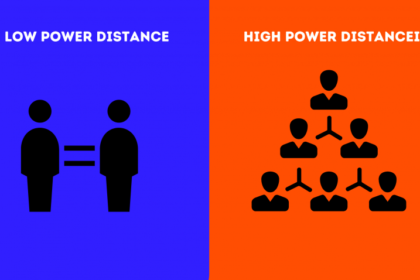
This thought came to me while reading an article on one of India’s leading airlines and how they were able to implement good practices using a technique, Power Distance even though many of them weren’t really customer focused or beneficial. Since I concurred with several of the points mentioned in the article and have been critical of some of the same points which I had encountered during similar experiences with the same airline, I thought of exploring the same to a wider extent which has resulted in today’s article.
Power Distance, as a cultural dimension, was first introduced by Dutch social psychologist Geert Hofstede in the late 1970s. It refers to the extent to which individuals in a society or organization accept the unequal distribution of power and start being led by the people or organizations as they have achieved a dominating position in their areas of work or influence. In organizational contexts, power distance influences leadership styles, communication patterns, decision-making processes, and the overall work environment.
Hofstede’s cultural dimensions theory outlines Power Distance as one of the key dimensions that shape cultural variations among societies and organizations.
· High Power Distance Cultures
In these cultures, individuals accept hierarchical order without much question. Superiors are revered, and there is a significant gap between those with power and those without. It’s difficult to really segregate these at a country level as these could vary even according to local areas.
Let’s also now look at some organizations and even some individuals to help understand the same in better detail.
Almost all the public sector or government organizations including large public sector banks in India, traditionally has a hierarchical structure. Decision-making in most of these organizations is often centralized, and highly process driven, and this type of cultures aligns with high Power Distance characteristics.
Does this have anything to do with the people involved.
Consider the administrative services in almost of the countries including in India. In India it is referred as the Indian Administrative Services. Almost all of them follow a very High-Powered distance type of decision making where almost all decisions are centralised.
What is even more interesting is the people who make it into these services are the ones who have the best knowledge, the best minds and even the best thought and understanding process and grasping capabilities. So, the creation of higher power distances is not dependent on the people alone who are part of the organization.
During times of crisis, organizations with a high-Power Distance culture may exhibit resilience and adaptability. Decisions can be made quickly, and employees are accustomed to following directives efficiently.
Companies with an excessively high-Power Distance may face challenges related to authoritarianism, stifling creativity, and innovation. Employees may feel disengaged and reluctant to share ideas.
· Low Power Distance Cultures
In contrast, low Power Distance Cultures emphasize equality, with superiors and subordinates viewing each other as equals. Decisions are often made through consultation and collaboration.
Scandinavian countries like Sweden and Norway are traditionally known for their low Power Distance. Organizations in these cultures often embrace participative leadership, where decision-making involves input from team members at various levels.
Most of the new generation companies like technology and service companies prioritize a low Power Distance culture, fostering an environment where employees feel empowered to voice their opinions and contribute to decision-making. This often leads to higher levels of employee engagement.
This is also crucial for organizations with high levels of customer interactions. While broad operating procedures can be laid out, the requirements and needs which come up can be unique and will need customer facing people to be empowered to take those decisions on the spot.
Attached below is an earlier article on the Taj Mumbai episode which captures this perspective from a real-life experience for your ready reference.
(1) #Leadership from #Below – A tribute to the #26/11 #Taj #Employees | LinkedIn
Organizations with a low Power Distance culture may encounter resistance to change, as decision-making involves more consultation process and can at times take longer if the same is not driven aggressively. This can be a drawback in fast-paced and sun rise sectors.
Power Distance is a multifaceted concept that plays a pivotal role in shaping not only organizational dynamics but also cultural dynamics as well…
Some real-life examples from the same airline industry from where I started the article are how some organizations have been able to make us board zone wise and make us stay waiting in packed buses still the cleaning of the aircraft is completed or reject requests to accommodate even a few minutes of late arrival to achieve their targeted goal of always making you reach your destination in time. It is also sometimes the sheer market dominance that these organizations have that give them the capability to executive these plans effectively and bring in these changes in the consumer habits and behaviours.
There is even a more tragic outcome of this power distance that has resulted in aircraft accidents in the cockpit.
Cockpit learning is an essential feature of flying profession, but it may be hampered by power distance in the cockpit due to captain/co-pilot subordination. Speaking-up to the captain may be difficult for some co-pilots but not speaking-up resulted in numerous aircraft accidents.
The earlier examples of market leaders in the passenger car segment or the mobile service segment today are similar. Striking a balance between hierarchy and collaboration, authority, and empowerment, is essential for fostering a healthy organizational culture that thrives on innovation, adaptability, and employee engagement.
To continue reading about such topics do subscribe to my LinkedIn page, Rejo’s Business Bytes, or my website, RejoFrancis.com



